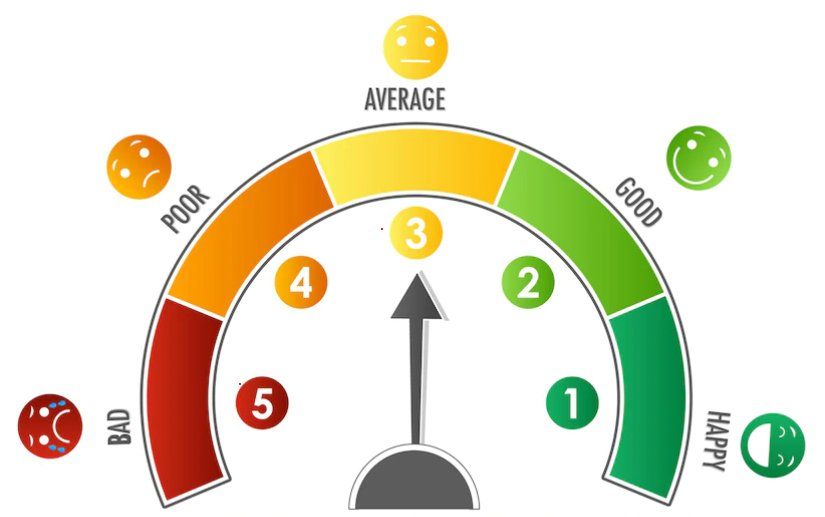Understanding customer sentiment is no longer a luxury but a necessity in today’s data-driven world. Whether you’re a business owner, marketer, or researcher, knowing how your audience feels about your brand, products, or services can shape your decisions and strategies. This is where sentiment analysis tool come into play.
Imagine having the ability to tap into millions of customer opinions across platforms like social media, reviews, and forums and distill them into actionable insights. That’s the power of sentiment analysis! This blog will take you on a deep dive into sentiment analysis tools, how they work, their benefits, and how they can revolutionize the way you interact with your audience. So, let’s explore how these tools can unlock the emotional pulse of your customers and drive success for your business.
Sentiment Analysis Tool: Unlocking Customer Emotions for Business Growth

What Is Sentiment Analysis?
Sentiment analysis, also known as opinion mining, is the process of analyzing text data to determine the emotional tone behind it. It involves identifying whether the sentiment expressed in a piece of content is positive, negative, or neutral. Think of it as a digital mood ring for your audience’s thoughts.
Why Is Sentiment Analysis Important?
In today’s digital era, customers are vocal on platforms like social media, review sites, and blogs. Sentiment analysis helps businesses understand their customers’ feelings and adapt their strategies accordingly. It’s the secret ingredient to creating meaningful customer relationships and boosting brand loyalty.
The Role of Sentiment Analysis Tools
Key Features of Sentiment Analysis Tools
- Automated Text Analysis: Processes vast amounts of data quickly.
- Real-Time Insights: Provides up-to-the-minute updates on audience sentiment.
- Customizable Dashboards: Displays data in user-friendly formats tailored to business needs.
Industries Benefiting from Sentiment Analysis
From marketing agencies to healthcare providers, sentiment analysis tools are transforming various industries. For instance:
- Retail: Understand customer preferences to improve product offerings.
- Politics: Gauge public opinion on policies and campaigns.
- Entertainment: Monitor audience reactions to movies and shows.
How Sentiment Analysis Works
Data Collection
The process starts by gathering data from various sources, such as social media, emails, surveys, and reviews.
Text Processing
Once collected, the text is cleaned and processed using natural language processing (NLP) algorithms. This involves removing irrelevant data, identifying keywords, and understanding context.
Sentiment Scoring
The final step is assigning scores to sentiments:
- Positive: Indicates satisfaction or happiness.
- Negative: Highlights dissatisfaction or complaints.
- Neutral: Reflects impartial or mixed feelings.
Types of Sentiment Analysis Tools
1. Basic Sentiment Analysis Tools
These tools focus on simple positive, negative, and neutral classifications. They are ideal for small businesses or those new to sentiment analysis.
2. Advanced AI-Powered Tools
AI-driven tools use machine learning to provide deeper insights, such as detecting sarcasm or complex emotional nuances.
3. Real-Time Monitoring Tools
Designed for brands that need instant feedback, these tools provide real-time sentiment tracking, crucial for managing crises or launching new products.
Benefits
1. Enhanced Customer Insights
Understanding how customers feel about your brand enables more personalized interactions and better customer experiences.
2. Improved Marketing Strategies
By identifying what resonates with your audience, you can refine campaigns to maximize engagement and ROI.
3. Effective Brand Reputation Management
Sentiment analysis tools act as an early warning system for potential PR disasters, allowing you to address issues proactively.
Challenges
1. Context Misinterpretation
Words can have different meanings based on context.
2. Language and Cultural Differences
Slang, idioms, and cultural expressions pose challenges, especially in multilingual markets.
How to Choose the Right Sentiment Analysis Tool
1. Assessing Your Business Needs
Define your goals, such as monitoring brand reputation, analyzing customer feedback, or tracking campaign performance.
2. Key Features to Look For
Look for tools with robust NLP capabilities, real-time monitoring, and integration options with your existing systems.
Best Practices for Using Sentiment Analysis Tools
1. Regular Data Updates
Ensure that the data you analyze is current and relevant to your objectives.
2. Combining Tools with Human Expertise
While tools can process data at scale, human analysts are crucial for interpreting nuanced insights and making informed decisions.
Future Trends
1. Increased AI Integration
Expect tools to become smarter with advanced AI algorithms, improving accuracy and efficiency.
2. Expansion in Multilingual Capabilities
The demand for tools capable of analyzing diverse languages and dialects is growing, driven by global markets.
Conclusion
Sentiment analysis tools are indispensable for modern businesses looking to understand their audience and stay ahead in a competitive market. By leveraging these tools effectively, you can gain deeper customer insights, improve strategies, and safeguard your brand reputation.
Ready to see how sentiment analysis can transform your business? Request a demo from AIM Technologies today and discover how our cutting-edge tools can help you unlock the true potential of your customer insights.
FAQs
- What is a sentiment analysis tool?
A sentiment analysis tool analyzes text data to determine whether the sentiment is positive, negative, or neutral. - Who uses sentiment analysis tools?
Businesses, marketers, researchers, and political analysts use these tools to understand audience sentiments. - Can sentiment analysis tools detect sarcasm?
Advanced AI-powered tools can detect sarcasm and other complex emotional nuances. - How accurate are sentiment analysis tools?
The accuracy depends on the tool’s algorithms and the quality of the data analyzed. - Are sentiment analysis tools expensive?
Prices vary widely; some tools are free with basic features, while others charge for advanced functionalities.




